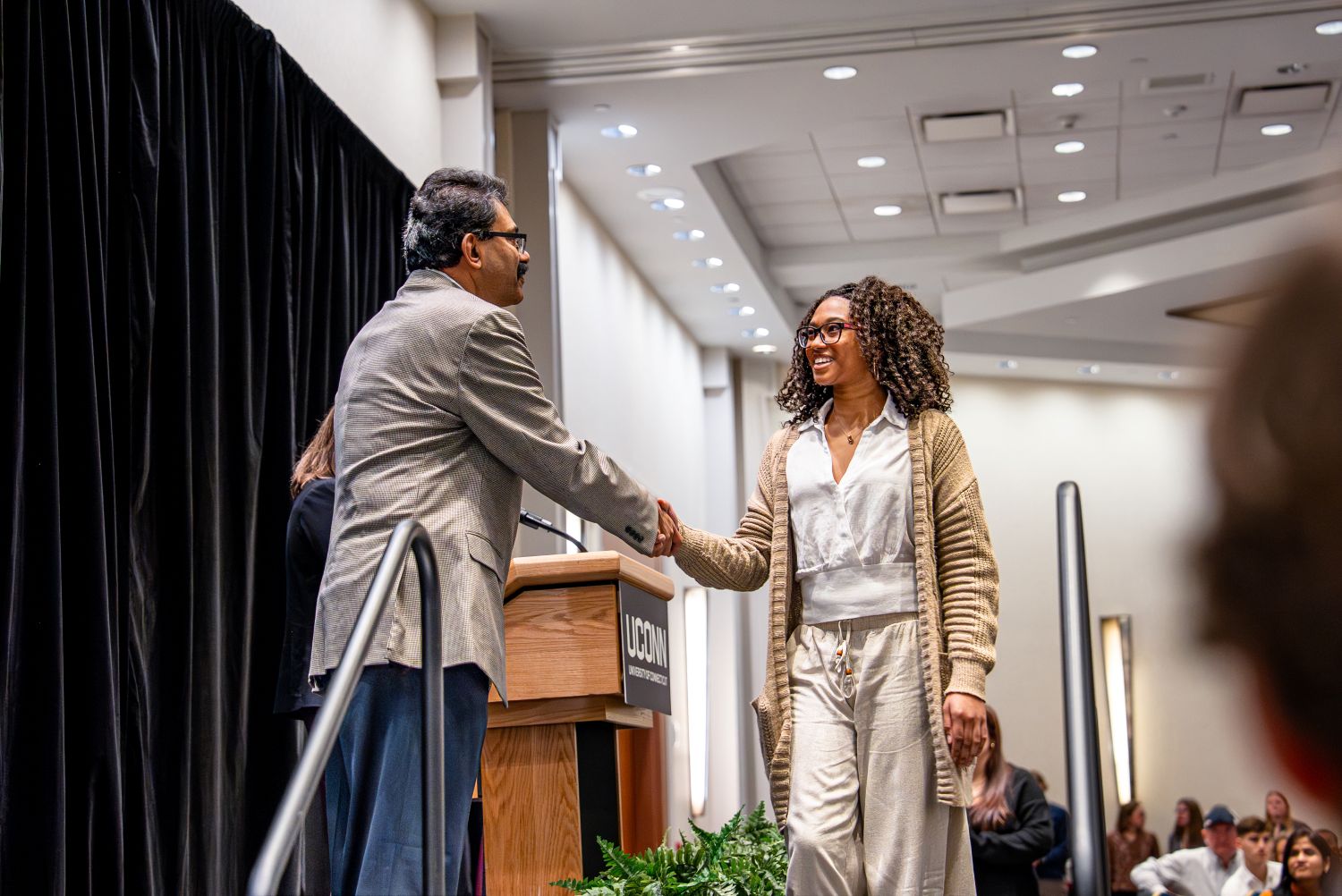
Chemists in the College of Liberal Arts and Sciences have identified the molecules in algae that direct the organisms to convert light from the sun to oxygen in the process known as photosynthesis.
Their research, published online in the Proceedings of the National Academy of Sciences (PNAS), reveals for the first time the most important molecules involved in controlling the energy flow in photosynthesis in a system as complex as marine algae.
Knowledge gained from this work will help other researchers seeking to build novel solar energy conversion devices based on photosynthetic principles.
Harry Frank, professor of chemistry, led the research, which was funded by grants from the National Science Foundation and the National institutes of Health. Contributing were Robert Birge, the Harold S. Schwenk Sr. Distinguished Chair in Chemistry and 2009 Connecticut Medal of Science winner, and Dariusz Niedzwiedzki, a former postdoctoral researcher who worked with Frank at UConn and is now at Washington University in St. Louis.
Collaborating in the project were scientists at Ruhr University in Bochum, Germany; at Macquarie University in Sydney, Australia; and at the University of South Bohemia and the Czech Academy of Sciences in the Czech Republic.
The scientists carried out genetic engineering on a light-harvesting protein in an alga, modifying the communication lines between carotenoids and chlorophylls, the light-harvesting molecules of the organism. Carotenoids collect light from a different part of the visible spectrum than chlorophylls, “boosting” the organism’s photosynthetic capability.
The researchers were able to pick out the particular carotenoid that is the essential conduit for transferring energy to chlorophyll, in effect “issuing the order” for photosynthesis to take place.
As Frank describes it, the research could be likened to trying to deduce from snapshots of a corporation’s employees which one is the CEO. By tapping into the communications lines between individuals in the company, it would be possible to determine who issues orders.
Frank, a world-renowned expert on carotenoids and former president of the International Carotenoid Society, specializes in research on how carotenoids harvest light and their role in photosynthesis and in providing color to plants, crustaceans, and birds.
When Frank began studying carotenoids in the 1970s, they were not thought to play an important role in photosynthesis. Now dozens of research groups study them, and they are known as “the perfect light antennas,” says Birge.
Birge’s role in the project was to provide state-of-the-art quantum computation. Researchers in Germany determined the structure of the protein, and scientists in Australia and the Czech Republic provided protein samples and other expertise.
Frank did sophisticated, ultrafast laser spectroscopy to learn how the structure worked and how individual elements in the protein track light and transfer energy.
Such international collaboration involving many specialists is increasingly common in solving complex scientific problems.
“This is a defining study of how proteins can capture light and move the energy around in the protein so it ends up where it is most useful,” says Birge.
By learning how nature solves this problem, scientists and engineers can gain insight into how to mimic nature in designing solar energy technology. While the best solar cells are now only 40 percent efficient, Birge notes, nature is routinely 65 percent to 100 percent efficient.
An abstract of the article and a pdf of the complete paper is available on the PNAS website.


